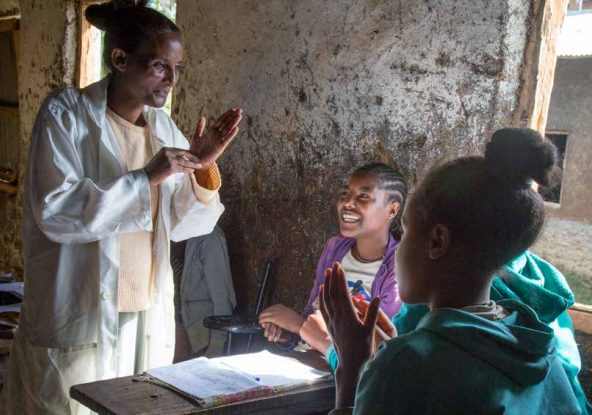Disabled adolescents are being left behind in low and middle income countries

There are between 93 million and 150 million children and adolescents around the world with a disability, and of these 80% live in low and middle income countries where 80% of disabled people live below the poverty line.
The Overseas Development Institute (ODI)’s report titled ‘Gender and Adolescence: Global Evidence (GAGE)’ aims to address research gaps in how adolescents with disabilities are far more likely to be denied their basic rights to education, health, recreation and wellbeing.
The report reviewed evidence from surveys and qualitative studies in Bangladesh, Ethiopia, Jordan and Palestine involving over 6000 adolescents and their care givers. The report highlights the intersecting capabilities that need to be supported for disabled adolescents to reach their potential in low and middle income countries.
Adolescents are increasingly recognised as key windows of opportunity, but adolescents with disabilities have been largely left behind. The cost of inaction are significant, in Bangladesh the estimate cost of foregone schooling by disabled children is $26.2 million each year due to lower lifetime earnings. Similarly, the cost in terms of foregone income, due to caring responsibilities, is estimated to reach $234 million each year.
The report found that adolescents with disabilities face a range of challenges and widespread discrimination and stigma, with girls facing an even greater level of discrimination due to gender norms and practices.
Education was found to be a key challenge for disabled adolescents with many facing poor access to education and very limited access to special education services. Of the 58 million children who are out of school, one third (19 million) have a disability. The report found that disabled adolescents are far less likely to enrol in school and far more likely to drop out.
For example, in Ethiopia adolescents with disabilities are 14% less likely to be enrolled and those in school complete half a year less schooling.
The research also found that adolescents with disabilities are less likely to be in education as they advance by grade and that the gap within enrolment is worsening over time.
Disabled adolescents have a poorer overall health compared to their peers without a disability due to disability related stigma, cost and accessibility issues, the report found. In addition, access to disability-specific health services are limited.
The report found that in Bangladesh and Ethiopia adolescents with a disability are 53% more likely to experience serious illness or injury.
The situation is often worse for girls who have significantly poor access to sexual health information and services due to restrictive gender norms.
Psychosocial is also a key challenge for disabled adolescents as they are likely to experience high levels of social isolation and can feel stigmatised and unsupported. Consequently, they are more likely to develop depression, loneliness and low self-esteem. The report found this to be particularly high among refugees.
Disabled adolescents also face safety issues and are 3-4 times more likely to experience physical, sexual and emotional violence. Those with intellectual impairments are at an increased risk of violence.
The report also noted that adolescents with disabilities have far less opportunity to access voice and agency. Due to poor infrastructure and transport systems, unavailable assistance, stigma and other factors disabled adolescents face significant mobility restrictions, this is notably worse for girls.
Similarly, disabled adolescents are often excluded from school, community and family activities. For example, in Ethiopia adolescents with a disability are 8% less likely to contribute to household decisions. This is often worsened by the fact that many disabled adolescents are unaware of their rights to equality.
Excluding disabled persons from work range from 3%-7% in low and middle income countries; however, many countries lack the training and skills development opportunities for disabled adolescents and those that exist often do not align with market demands. Again, this is worse for girls who have particularly low access to decent employment opportunities.
The report recommends that policy action must be taken to support disabled adolescents and capitalise on the window of opportunity they present. It is through inclusive policies that the SDGs can be achieved. The report suggests five key recommendations:
- Support adolescent capabilities and transitions through an integrated package of disability-tailored support. This includes, but is not limited to: developing detailed education plans; ensuring access to primary and disability specific healthcare; guaranteeing safe spaces and opportunities are available to disabled adolescents; providing families and communities with information on the increased risk of violence; improving the awareness of care givers and service providers on the importance of support; and ensuring that social assistance programmes have adequate weighting to cover the additional costs of disabled adolescents.
- Address intersecting disadvantages to leave no adolescent behind.
- Engage and support caregivers of adolescents with disabilities.
- Tackle data and evidence gaps to improve evidenceinformed policy development and programming.
- Improve governance and accountability among policy-makers and donors.
Join us for the upcoming AIDF Global Summit being held on 5-6 September in Washington D.C to discuss key challenges in global development.
If you’d like to stay informed on the latest updates in aid and development, please sign up for the AIDF newsletter.
Image credit: Nathalie Bertrams / GAGE 2018













